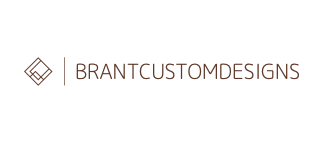The Punch List
Everything You're Too Scared To Ask You're Contractor
An honest Q&A with a Project Manager who’s seen it all — the good, the bad, and the completely avoidable.
What should a homeowner do first when they’re considering a remodel like this?
If you already have a Pinterest board and a clear vision in mind the first step you should take is calling a contractor, providing all of that information and getting an estimate. If you aren't someone that has an eye for finishes and doesn’t want to deal with the stress of selecting everything, hiring a designer can be a great choice. I have worked directly with designers on several projects, and so long as the client is able to express the key things they want, the designer can typically fill in the blanks.
Once a contractor is involved, what should I be looking for in their estimate and proposal?
It is important that you always read your contract thoroughly prior to signing anything. Make sure that all of the things you discussed at estimate are listed clearly in the contract, and if anything is missing, have the verbiage added to the contract. Typically, additional costs or "change orders" are only added if you run into something during the project that was not visible or if it isn’t up to current building codes, or if you decide to add something that wasn’t originally planned. If you think you're being overcharged, it's always good to get quotes from multiple companies. Some may be more expensive, but have a great warranty, strong reviews, and a long-standing reputation. Cheaper doesn’t always mean better.
How do change orders actually work?
Typically, change orders are required when a client goes over their allowance on things like cabinets, flooring, tile, fixtures, etc. Your contract will either have pre-selected materials or an allowance listed. Less often, change orders are needed when something unforeseen pops up — like mold or structural issues. When these come up, I document and communicate. A change order is a red flag if it’s dropped on you with no discussion or explanation.
Why do remodels take longer than expected, and how do you keep things moving?
There are several reasons a project might be delayed — material shortages, delivery issues, or major structural surprises that require an engineer or city inspector. I always give clients a rough timeline before we start. If there are changes, I communicate what happened, adjust the schedule, and share the update. You should never feel left in the dark.
What’s your communication style during the project?
Communication is key. I tell clients upfront they’ll receive bi-daily updates. If they want more, I make myself available. Everyone gets a project schedule in advance, and we discuss quiet or 'stressed' moments — like waiting on countertop lead times or city inspections. If you prepare people properly, they’re generally very understanding.
Who’s actually working on my project day to day?
This comes down to clear communication. The client should know when the plumbers, electricians, drywallers, etc. are coming. Different trades require different skills, so yes, you’ll see new faces — but you should always know who’s coming and why. If something looks off, just ask. Your contractor should be able to answer any questions.
Are there any red flags I should look for when hiring a contractor?
Always do your research and read reviews. Never pay in full before the project begins. Trust your gut — if you don’t get a good feeling from someone, don’t hire them. We’re here to provide a service, and if the relationship feels off, that’s a sign.
What does the full process of a kitchen remodel look like?
Estimate, approval, pre-construction meeting, material selections, schedule confirmation, plumbing disconnect, demo, framing (if needed), plumbing rough-in, electrical rough-in, inspections, drywall/paint, flooring, cabinets, countertop template, countertop install, backsplash, electrical trim, plumbing trim, final paint, punch list. The biggest delays happen during inspections or while waiting for countertops — both of which are outside your contractor’s control.
What are the biggest things that end up costing more than expected?
The biggest cause of added costs is upgraded materials. If your estimate is based on standard cabinets and you choose custom Alderwood, there will be a change order. Upgrading tile, fixtures, and finishes adds up quickly — so stay within your allowances.
Do you help with design choices — or should I hire a separate designer?
Yes and no. I help clients with layout and what’s possible structurally. Beyond that, material selections are up to the homeowner or a designer. I’ll give opinions if asked, but everyone’s taste is different.
What happens after the project is “done”?
Most contractors offer at least a 1-year warranty — always ask about this upfront. My company offers a 3-year warranty. If a past client calls me with an issue, no matter how small, I get it taken care of. That’s part of doing it right.
Why do you do this kind of work?
This career started out of necessity. I was a young kid with a child on the way and needed stability. At first, it was just a paycheck — hard labor and long hours. But over time, I got good at my craft and started feeling real pride in the work. Eventually, I moved into leadership, learned how to manage clients and crews, and found out I love being the guy with the answers. I get to solve problems, teach others, and bring people’s ideas to life. That’s what makes it worth it.
